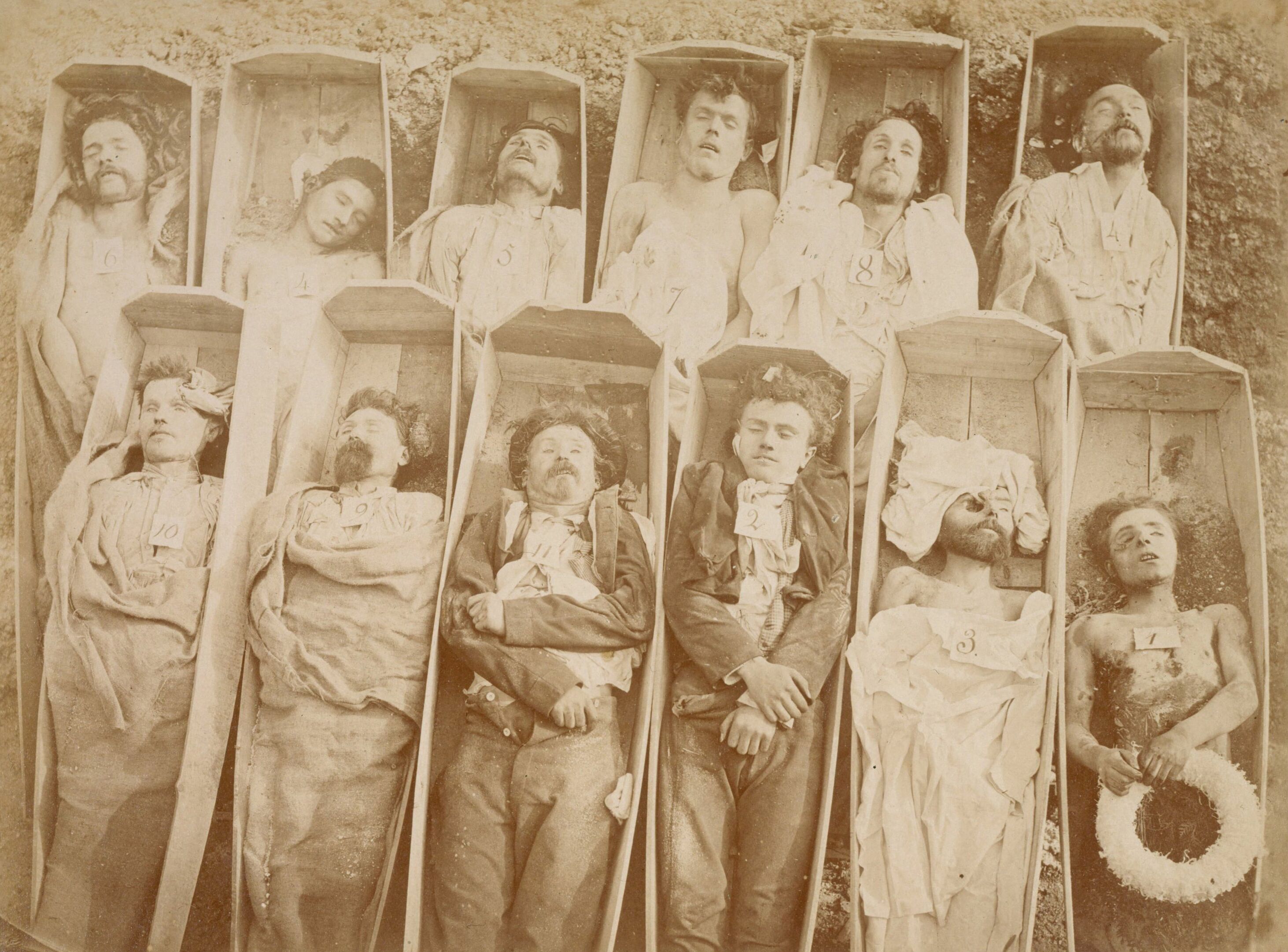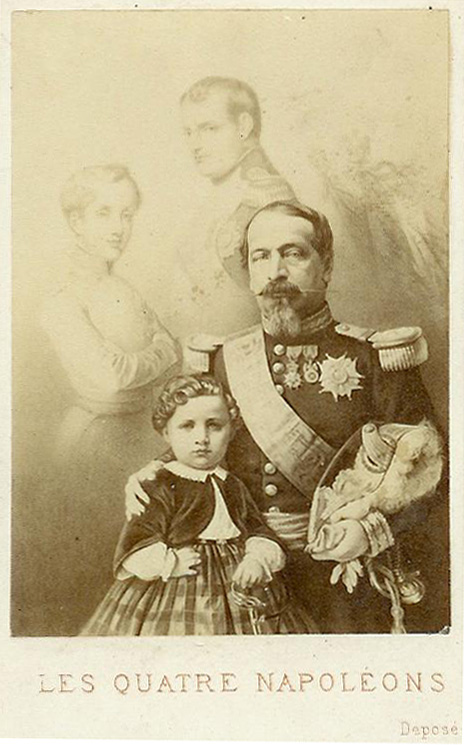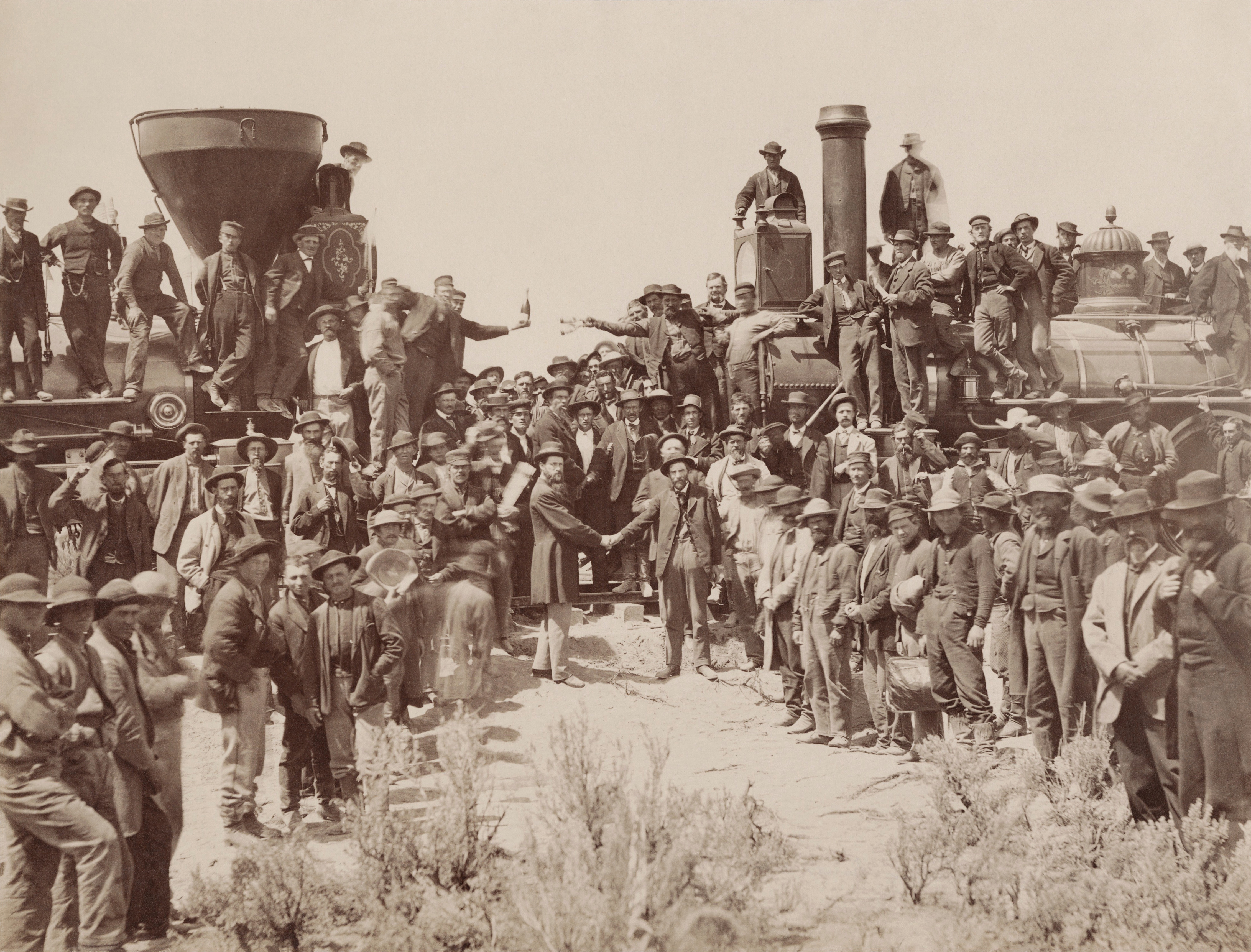|
Elisa Napoléone Baciocchi
Elisa Napoléone Baciocchi Levoy (3 June 1806 – 3 February 1869) was the daughter of Felice Baciocchi and Elisa Bonaparte, who was Princess of Lucca and Piombino and a sister of Napoleon I. She was their only child to live beyond their teenage years. Life Princess Elisa Napoléone Baciocchi Levoy was born at Lucca in the Principality of Lucca and Piombino, where her mother was the ruling princess. Violinist Niccolò Paganini often resided at Lucca at her court. On 17 November 1824, she married Count Filippo Camerata-Passionei di Mazzoleni (1805–1882) in Florence. They had one son, Charles Félix Jean-Baptiste Camerata-Passionei di Mazzoleni, born in 1826. The couple separated shortly after their son's birth, and Elisa moved to Trieste, where she contacted other exiled members of the Bonaparte family to try to re-establish Napoleon's only son, Napoleon François, on the throne of France. On Napoleon François's death in 1832, Elisa supported the rise of her cousin Loui ... [...More Info...] [...Related Items...] OR: [Wikipedia] [Google] [Baidu] |
André-Adolphe-Eugène Disdéri
André Adolphe-Eugène Disdéri (; 28 March 1819 – 4 October 1889) was a French photographer who started his photographic career as a daguerreotype, daguerreotypist but gained greater fame for patenting his version of the ''carte de visite,'' a small photographic image which was mounted on a card. Disdéri, a brilliant showman, made this system of mass-production portraiture world famous. Early life Disdéri began his working life in a number of occupations, while also studying art. He started as a daguerreotype, daguerreotypist in Brest, France, Brest in 1848 or 1849 but in December 1852 or January 1853 he moved to Nîmes. There he received assistance from Édouard Boyer and Joseph Jean Pierre Laurent with his photography-related chemistry experiments. After a year in Nîmes he moved to Paris, enabling easy access to people who would be the subjects of his ''cartes de visite.'' Disdéri and the ''carte de visite'' Photographs had previously served as Visiting card, calling ca ... [...More Info...] [...Related Items...] OR: [Wikipedia] [Google] [Baidu] |
Napoleon III
Napoleon III (Charles-Louis Napoléon Bonaparte; 20 April 18089 January 1873) was President of France from 1848 to 1852 and then Emperor of the French from 1852 until his deposition in 1870. He was the first president, second emperor, and last monarch of France. Prior to his reign, Napoleon III was known as Louis Napoleon Bonaparte. He was born at the height of the First French Empire in the Tuileries Palace at Paris, the son of Louis Bonaparte, King of Holland (r. 1806–1810), and Hortense de Beauharnais, and paternal nephew of the reigning Emperor Napoleon I. It would only be two months following his birth that he, in accordance with Napoleon I's dynastic naming policy, would be bestowed the name of Charles-Louis Napoleon, however, shortly thereafter, Charles was removed from his name. Louis Napoleon Bonaparte was the first and only president of the French Second Republic, 1848 French presidential election, elected in 1848. He 1851 French coup d'état, seized power by force i ... [...More Info...] [...Related Items...] OR: [Wikipedia] [Google] [Baidu] |
Nobility From The Republic Of Lucca
Nobility is a social class found in many societies that have an aristocracy. It is normally appointed by and ranked immediately below royalty. Nobility has often been an estate of the realm with many exclusive functions and characteristics. The characteristics associated with nobility may constitute substantial advantages over or relative to non-nobles or simply formal functions (e.g., precedence), and vary by country and by era. Membership in the nobility, including rights and responsibilities, is typically hereditary and patrilineal. Membership in the nobility has historically been granted by a monarch or government, and acquisition of sufficient power, wealth, ownerships, or royal favour has occasionally enabled commoners to ascend into the nobility. There are often a variety of ranks within the noble class. Legal recognition of nobility has been much more common in monarchies, but nobility also existed in such regimes as the Dutch Republic (1581–1795), the Republic of Ge ... [...More Info...] [...Related Items...] OR: [Wikipedia] [Google] [Baidu] |
House Of Bonaparte
The House of Bonaparte (originally ''Buonaparte'') is a former imperial and royal European dynasty of French and Italian origin. It was founded in 1804 by Napoleon I, the son of Corsican nobleman Carlo Buonaparte and Letizia Buonaparte (née Ramolino). Napoleon was a French military leader who rose to power during the French Revolution and who, in 1804, transformed the French First Republic into the First French Empire, five years after his ''coup d'état'' of November 1799 (18 Brumaire). Napoleon and the '' Grande Armée'' had to fight against every major European power (except for the ones he was allied with, including Denmark-Norway) and dominated continental Europe through a series of military victories during the Napoleonic Wars. He installed members of his family on the thrones of client states, expanding the power of the dynasty. The House of Bonaparte formed the Imperial House of France during the French Empire, together with some non-Bonaparte family members. I ... [...More Info...] [...Related Items...] OR: [Wikipedia] [Google] [Baidu] |
1869 Deaths
Events January * January 3 – Abdur Rahman Khan is defeated at Tinah Khan, and exiled from Afghanistan. * January 5 – Scotland's second oldest professional football team, Kilmarnock F.C., is founded. * January 20 – Elizabeth Cady Stanton is the first woman to testify before the United States Congress. * January 21 – The P.E.O. Sisterhood, a philanthropic educational organization for women, is founded at Iowa Wesleyan College in Mount Pleasant, Iowa. * January 27 – The Republic of Ezo is proclaimed on the northern Japanese island of Ezo (which will be renamed Hokkaidō on September 20) by remaining adherents to the Tokugawa shogunate. February * February 5 – Prospectors in Moliagul, Victoria, Australia, discover the largest alluvial gold nugget ever found, known as the "Welcome Stranger". * February 20 – Ranavalona II, the Merina Queen of Madagascar, is baptized. * February 25 – The Iron and Steel Institute is formed in Lo ... [...More Info...] [...Related Items...] OR: [Wikipedia] [Google] [Baidu] |
1806 Births
Events January–March *January 1 ** The French Republican Calendar is abolished. ** The Kingdom of Bavaria is established by Napoleon. *January 5 – The body of British naval leader Horatio Nelson, 1st Viscount Nelson, lies in state in the Painted Hall of Greenwich Hospital, London, prior to his funeral. *January 8 – Battle of Blaauwberg: British infantry force troops of the Batavian Republic in the Dutch Cape Colony to withdraw. *January 9 ** The Dutch commandant of Cape Town surrenders to British forces. On January 10, formal capitulation is signed under the Treaty Tree in Papendorp (modern-day Woodstock). ** Lord Nelson is given a state funeral and interment at St Paul's Cathedral in London, attended by the Prince of Wales. *January 18 – The Dutch Cape Colony capitulates to British forces, the origin of its status as a colony within the British Empire. *January 23 ** Following the death of William Pitt the Younger, his cousin Lord Grenville succeeds him as ... [...More Info...] [...Related Items...] OR: [Wikipedia] [Google] [Baidu] |
Michel Ghislain Stapleaux
Michel Ghislain Stapleaux (26 June 1799, in Brussels – 1881, in Gien) was a Belgian portraitist and history painter. He was the husband of the flower painter Louise Schavije and won two gold medals for history painting, in the competitions at Brussels in 1822 and Antwerp in 1823. Life He studied under the French painter Jacques-Louis David and was his last assistant during his years of exile in Brussels. His main collaboration with his master was '' Mars Disarmed by Venus and the Graces'' - he organised its exhibition in Paris in 1824. He also completed David's ''The Anger of Achilles'' and was put in charge of supervising the engravings after ''Speech in the tennis court'', ''The Coronation of Napoleon'' and '' Leonidas at Thermopylae''. He was present at David's death, took part in his funeral in January 1826 with Joseph Paelinck and François-Joseph Navez and placed David's palette and paintbrushes on his tomb. In 1834 he was commissioned to paint the portraits of Jérôme Bon ... [...More Info...] [...Related Items...] OR: [Wikipedia] [Google] [Baidu] |
Lorenzo Bartolini
Lorenzo Bartolini (Prato, 7 January 1777 Florence, 20 January 1850) was an Italian sculptor who infused his neoclassicism with a strain of sentimental piety and naturalistic detail, while he drew inspiration from the sculpture of the Florentine Renaissance rather than the overpowering influence of Antonio Canova that circumscribed his Florentine contemporaries. Biography Bartolini was born in Savignano di Prato, near Prato, Tuscany. After studying at the Florentine Academy of Fine Arts, honing his skills and reputation as a modeller in alabaster, he went in 1797 to Paris, where he studied painting under Jean-Baptiste Frédéric Desmarais, and afterwards sculpture under François-Frédéric Lemot. The bas-relief ''Cleobis and Biton'', with which he gained the second prize of the Academy in 1803, at once established his fame as a sculptor and gained for him a number of influential patrons. His bas-relief of the ''Battle of Austerlitz'' was among those executed for the column ... [...More Info...] [...Related Items...] OR: [Wikipedia] [Google] [Baidu] |
François Gérard
François Pascal Simon Gérard (, 4 May 1770 – 11 January 1837), titled as Baron Gérard in 1809, was a French painter. He was born in Rome, where his father occupied a post in the house of the French ambassador, and his mother was Italian. After he was made a baron of the Empire in 1809 by Emperor Napoleon, he was known formally as Baron Gérard. Life and career François Gérard was born in Rome to J. S. Gérard and Cleria Matteï. Henri Gérard 1888 At the age of twelve, Gérard obtained admission into the ''Pension du Roi'' in Paris. From the ''Pension'', he passed to the studio of the sculptor Augustin Pajou, which he left at the end of two years for the studio of the history painter Nicolas-Guy Brenet,Nicolas-Guy Brenet (1728–1792), professor at the Académie royale de peinture et de sculpture, 1778. Michael Bryan, ''Dictionary of Painters and Engravers'', ''s.v.'' "Brenet, Nicolas Guy". Brenet was also the master of Jean Germain Drouais. whom he quit almost imme ... [...More Info...] [...Related Items...] OR: [Wikipedia] [Google] [Baidu] |
Marie-Guillemine Benoist
Marie-Guillemine Benoist, born Marie-Guillemine Laville-Leroux (18 December 1768 – 8 October 1826), was a French Neoclassicism, neoclassical, History painting, historical, and Genre art, genre Painting, painter. Biography Benoist was born in Paris, the daughter of a civil servant. Her training as an artist began in 1781 under Élisabeth Vigée Le Brun, and she entered Jacques-Louis David's atelier in 1786 along with her sister Marie-Élisabeth Laville-Leroux. Benoist first exhibited in the Exposition de la Jeunesse in 1784, showing a portrait of her father and two pastel studies of heads. She continued to exhibit at the Exposition until 1788. The poet Charles-Albert Demoustier, who met her in 1784, was inspired by her in creating the character Émilie in his work ''Lettres à Émilie sur la mythologie'' (1801). In 1791, Benoist exhibited for the first time at the ''Paris Salon'', displaying her mythology-inspired picture ''Psyché faisant ses adieux à sa famille''. Anoth ... [...More Info...] [...Related Items...] OR: [Wikipedia] [Google] [Baidu] |
Brittany
Brittany ( ) is a peninsula, historical country and cultural area in the north-west of modern France, covering the western part of what was known as Armorica in Roman Gaul. It became an Kingdom of Brittany, independent kingdom and then a Duchy of Brittany, duchy before being Union of Brittany and France, united with the Kingdom of France in 1532 as a provinces of France, province governed as a separate nation under the crown. Brittany is the traditional homeland of the Breton people and is one of the six Celtic nations, retaining Culture of Brittany, a distinct cultural identity that reflects History of Brittany, its history. Brittany has also been referred to as Little Britain (as opposed to Great Britain, with which it shares an etymology). It is bordered by the English Channel to the north, Normandy to the northeast, eastern Pays de la Loire to the southeast, the Bay of Biscay to the south, and the Celtic Sea and the Atlantic Ocean to the west. Its land area is 34,023 ... [...More Info...] [...Related Items...] OR: [Wikipedia] [Google] [Baidu] |
Veneto
Veneto, officially the Region of Veneto, is one of the 20 regions of Italy, located in the Northeast Italy, north-east of the country. It is the fourth most populous region in Italy, with a population of 4,851,851 as of 2025. Venice is the region's capital while Verona is the largest city. Veneto was part of the Roman Empire until the 5th century AD. Later, after a Feudalism, feudal period, it was part of the Republic of Venice until 1797. Venice ruled for centuries over one of the largest and richest maritime republics and trade empires in the world. After the Napoleonic Wars and the Congress of Vienna, the Venetian Province, former Republic was combined with Lombardy and re-annexed to the Austrian Empire as the Kingdom of Lombardy–Venetia, until that was Italian unification, merged with the Kingdom of Italy in 1866, as a result of the Third Italian War of Independence and of a Plebiscite of Veneto of 1866, plebiscite. Besides Italian language, Italian, most inhabitan ... [...More Info...] [...Related Items...] OR: [Wikipedia] [Google] [Baidu] |






